How to see beauty
Last summer, I found myself at a farmers market of a small town in Southern France. The air was alive with chatter and the joy of yet another sunny day ahead. I made my way through tourists, neighbourhood regulars and other early birds. To escape the buzz, I stepped into the nearby cathedral.
Suddenly everything was quiet.
Here I was, breathing the cool air of this dim sanctuary, built ages ago by craftsmen, who had devoted 300 years of hard work to this colossal testimony to faith.
I got nervous.
Because there it was again, this familiar feeling that I have when I chance upon such moments of excessive beauty. I knew that this moment was special, yet I couldn’t really take it in, let alone enjoy it. Countless mundane thoughts and worries clouded my eyes.

What’s more, I didn’t really know where to look. All the details seemed to blur into a cliché of an experience, which I could label all too easily as “yet another gothic church”.
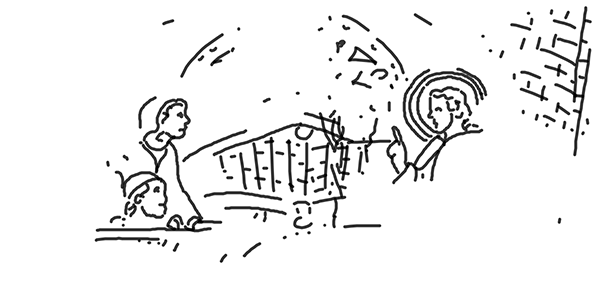
I felt like I was missing out on something, maybe everything— even though I was right here!
So I sat down.
And I took out my drawing pad.
How to draw something
1. Find your interest
The first thing you do when you want to draw something is to look. What is it exactly that you want to draw? This is hard because you have to make a decision about what is important for you. But it is also a filter that helps you clear your perception. We can do that in a rational manner and pick something that offers technical challenges for a drawing exercise, like an intricate ornament or an interesting perspective.

We can also base our decision on emotion and choose something that resonates with how we feel in that moment.

For me personally picking a subject is always the hardest part.
It was the sublimity of the cathedral, or more specifically, the fascination of how one can build a sky out of stones that caught my attention. I decided to focus on the texture of the vault and how those elegant arches lead our gaze upward.
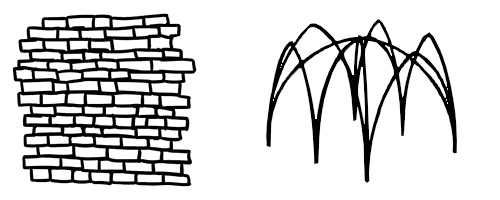
2. Make a plan
Usually, I like to just go with my guts and see where the drawing leads me. But even with this spontaneous approach it is often a good idea to have a rough idea of what it is that we want to do. A picture is not just a snapshot of reality, it is an interpretation of what we see. And it starts with the composition. Here is the one that I went for:

In case you go for a color drawing you might also commit to a limited palette of colours.

But I kept it simple and stuck with black ink.
Another thing to consider when we plan our drawing is the challenges they involve. For example, it is not easy to get the perspective of such a curved vault right.
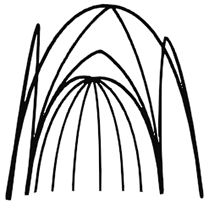
Just make sure that you don’t pick something too difficult. For harder problems I like to do little rough sketches. But I make sure not to overdo them because that can make the final output too predictable and boring.
3. Relax— but stay alert!
That was the hardest part. Now that we have chosen a subject and planned the drawing, we can finally get started.
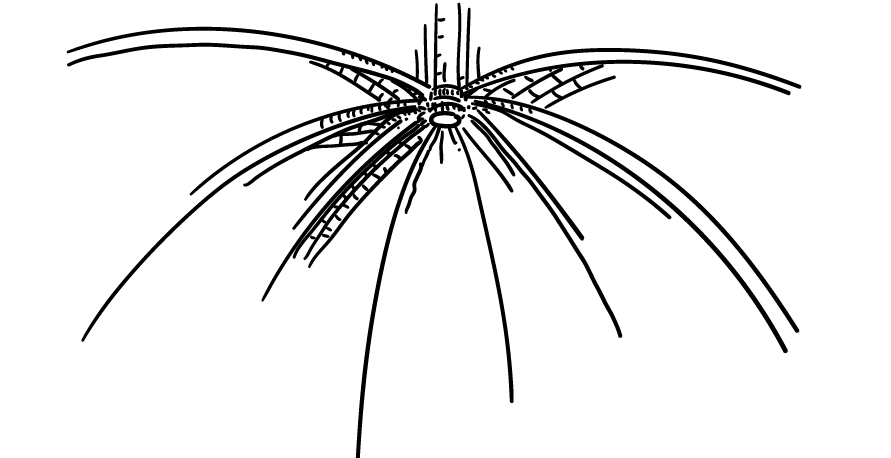
Once we are over the initial hump of putting the first lines on paper, the thing that we draw gradually takes over and guides us. We start to relax as we get to a point where we just, almost mechanically, fill the paper.

Almost!
At any given moment there is a real danger that we screw up or even ruin our drawing.
So we have to stay on our toes and retain some tension, or better: attention. We are in a weird balance between the relaxation of an (almost) automatic task and the tension of intense focus.
And surprises come to those who sit still. While I was drawing, someone gave me this.

4. Accept
How do we know when we are done? My rule of thumb is: when more lines don’t add anything interesting to the picture. To be honest, on that day my desire for a fresh croissant also had a say in the decision.
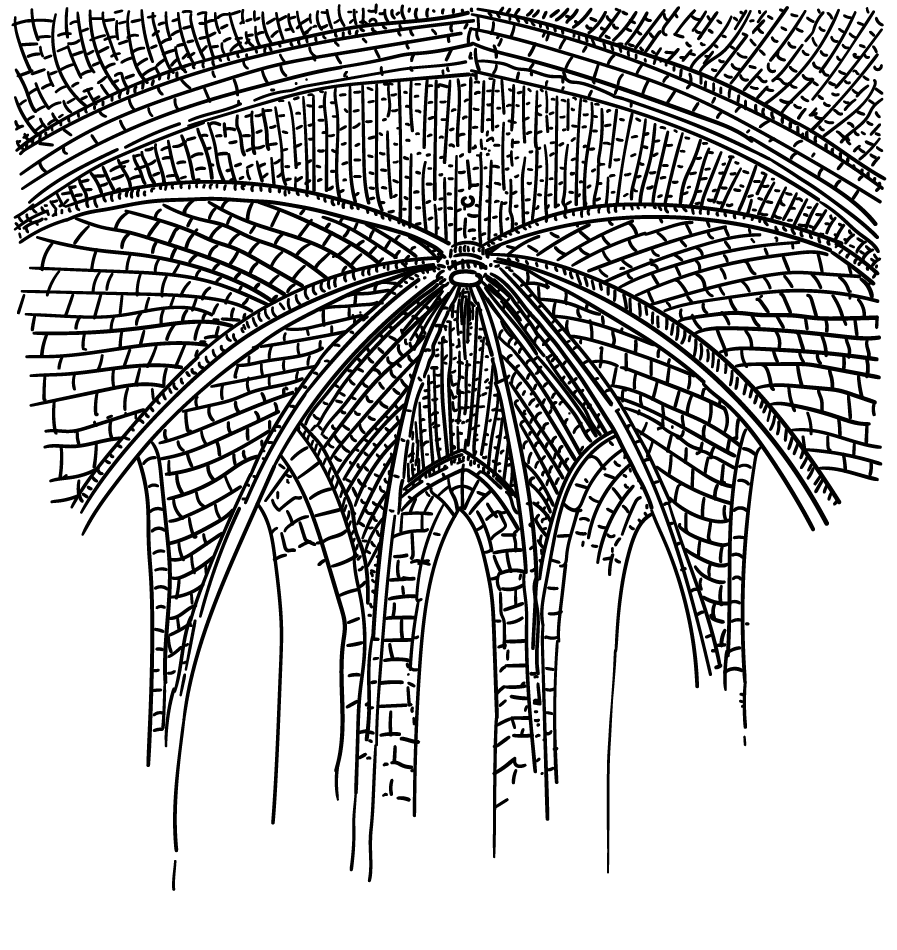
But is that drawing really finished? This looks like a rough sketch scribbled by someone huddling on a church bench. Well, that is exactly what it is.
If I had wanted to make an accurate depiction of the vault I might as well have taken photographs as a reference and carefully rendered that thing in all its glory at home.
But the purpose of this drawing is to connect with the situation, feel it, keep it in my heart. So I am ready to accept the drawing with all its imperfections.
Why is that beautiful?
The intense concentration of the selection and planning process pushes away any unnecessary thoughts. The meditative state of relaxed attention unites us with our environment. We can truly take in what is here and now, and experience its beauty deep in our soul.
Just like after an intense workout, I felt exhausted and refreshed as I stepped out of the cathedral into the summer day to get that well-deserved croissant.
Before you go
If you enjoyed this article, then subscribe to my mailing list to receive more animated stories!
I admire your thoughts and visuals very much. They ring so true to my own experience as a draftsperson..
I’m grateful they usually arrive in my email inbox just when the content is needed and the animations leave me w/ an entertaining treat. I’m sure a great deal of work goes into making them! Please know it is very appreciated!
I’m not a draftsperson, but I do sketch. I so agree with your comment and appreciate Ralph’s posts.
Muchas gracias por compartir tus ideas y pensamientos.
Thanks for posting this great article. I used to draw when I was a kid. I want people to praise my pictures so for the most time I just copy painting some relatively easy ones. After at least ten years I didn’t draw anything, the perfection stops me from trying again. You remind me that it’s a relaxing and self-pleasing thing. I may start again.
How was the croissant? 😉
Divine!
Lovely